|
Italian fuzes |
||
 |
There is little litterature in French or English on the Italian Artillery material and ordnance, although the equipments were various and typical. Italian Army was using Italian made technology, but also French guns and ammos, as well as captured Austro-Hungarian ones.
|
|
A very interesting Italian WW1 fuzes collection in an Italian museum. Pictures courtesy Luc Malchair. |
||
Return at the top of the page
|
||
Turkish fuze |
||
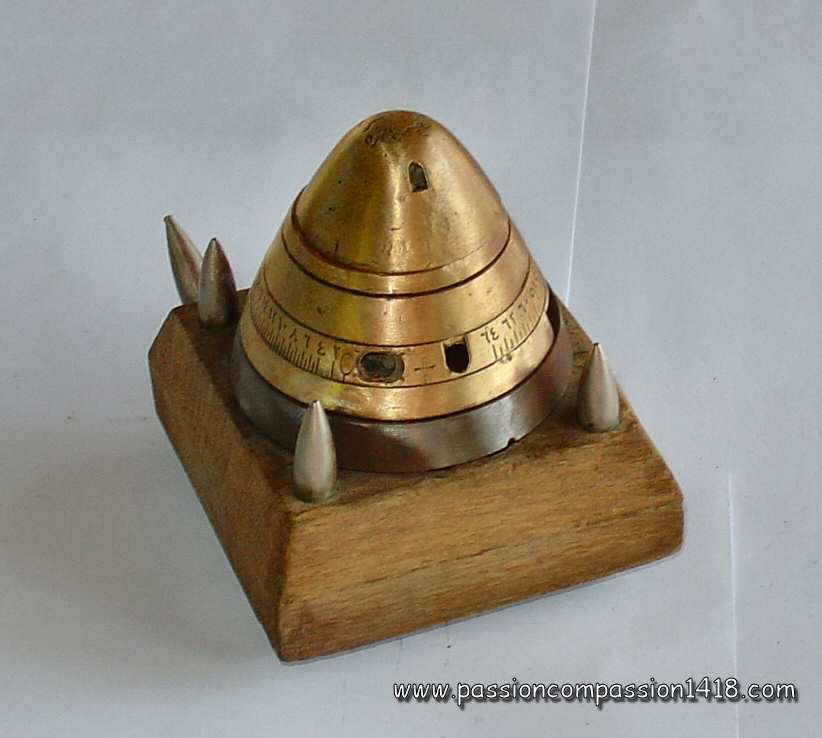 |
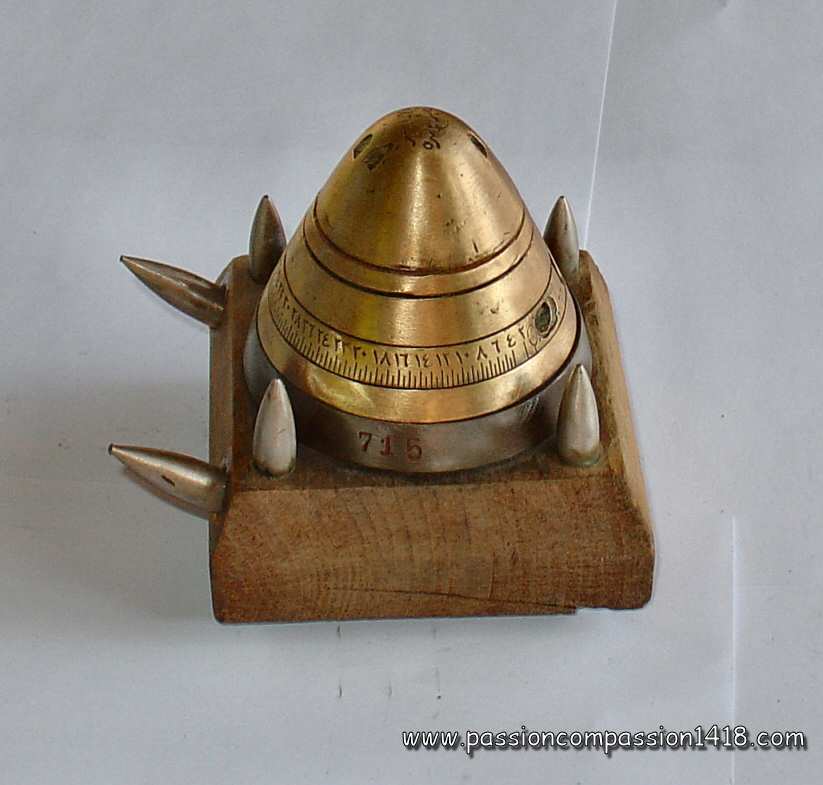 |
Thanks to its alliance with Germany, the Turkish army was equipped with modern Krupp guns and ammunitions, and particularly the 75mm field gun Mle 1903. They also had some French Schneider mountain guns... That fuze is most probably a German design of time and percussion fuze for 75 mm field gun. It is entirely made of brass, and wears arabic characters markings that I cannot decode. This reminds us that that period of Turkish history happened before Mustapha Kemal took the power and took several modernizing initiatives, including the adoption of the roman characters. I suppose that fuze had a German counterpart used by the Kaiser Army, but could not find it. I have no idea of the list of guns that used that fuze. Thread diameter 50 mm. |
Turkish fuze mounted as a souvenir with infantry bullets |
Turkish fuze - look on the arabic characters used for the time graduations |
|
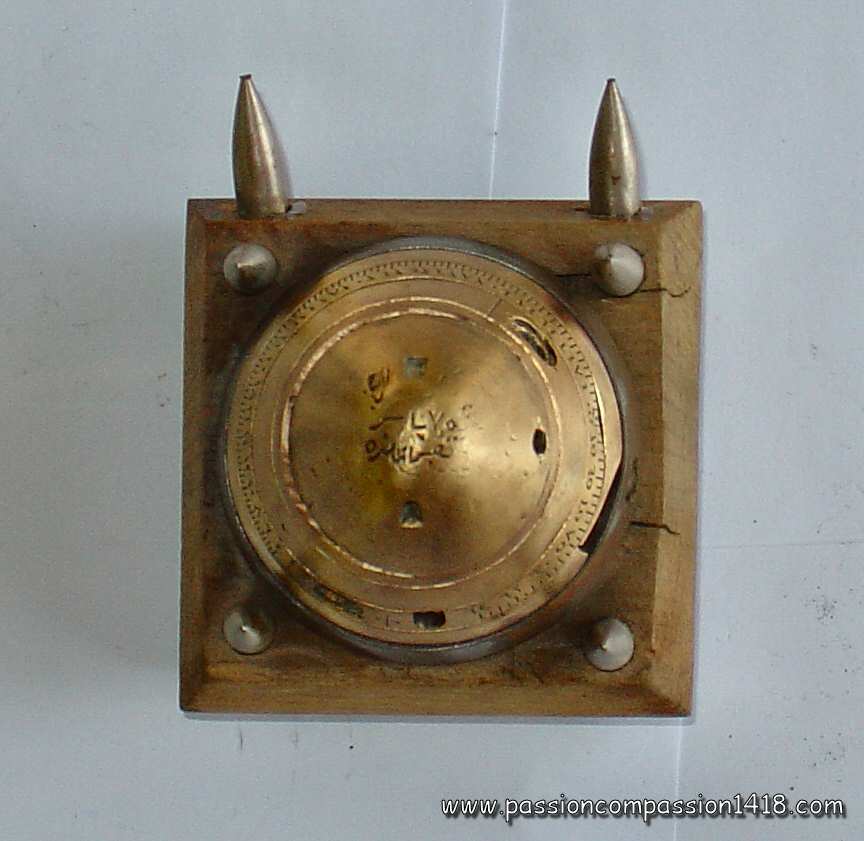 |
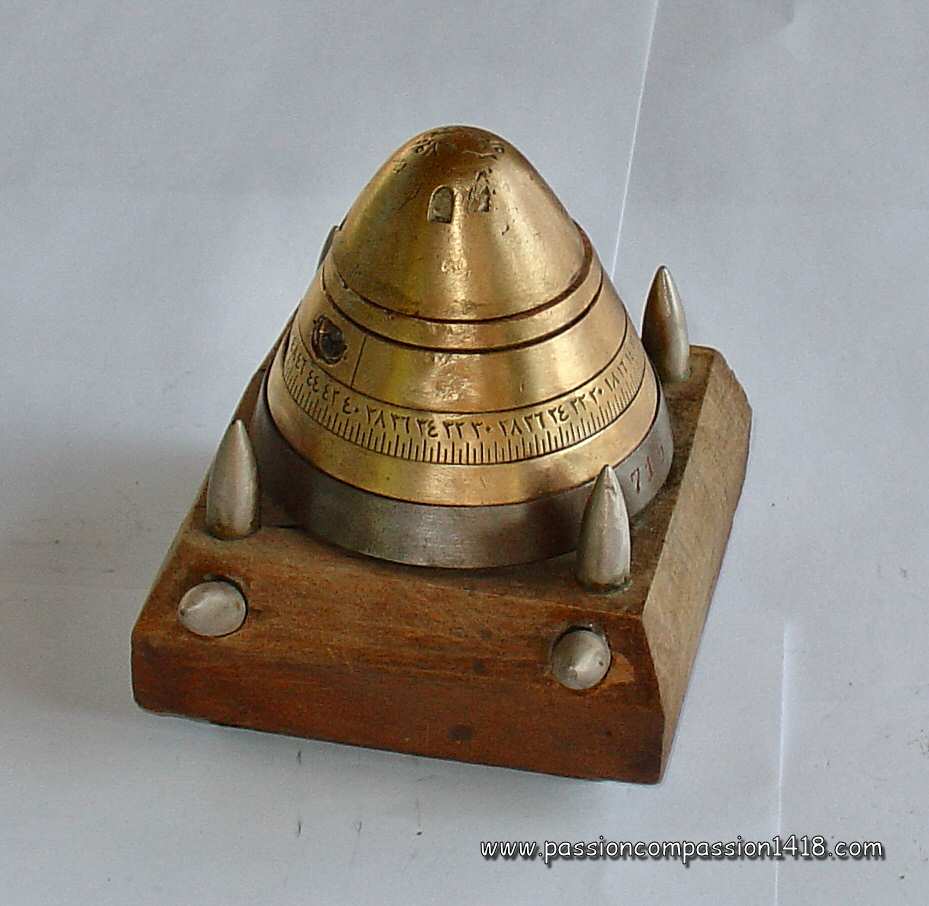 |
|
Turkish fuze. Arabic markings on top |
Turkish fuze |
|
Return at the top of the page |
||
This is valid for some artillery equipments, and in particular for fuzes.
However a lot of new fuze models were developped, most of the time using the principles of their ancestors of the Great War, before the arrival of moderne electronic fuzes.
This selection shows some examples.
US WW2 time fuzes |
||
 |
The next three fuzes have been observed in the Vosges area, in france, where fight occured in both WW1 and WW2 conflicts
The first fuze is most probably a TSQ M54 fuze. It was a superquick or time action (to 25 seconds) type fuze. Its time system was a classical two-discs pyrotechnic type, and its superquick impact system was a very simple inertia mechanism located at the very top of the cone. The second fuze is most probably a TSQ M55 fuze. It was a special version of the first M54 fuze, but having its booster integrated. The third fuze looks like a M43A3 mechanical time fuze. Mechanical fuzes replaced the classic pyrotechnic time fusing system by a clock mechanism, set to count time before explosion. That fuze has no impact element, and is therefore specially well suited for anti-aircraft use.
|
|
US fuzes US TSQ M54, TSQ M55, and TM43 |
||
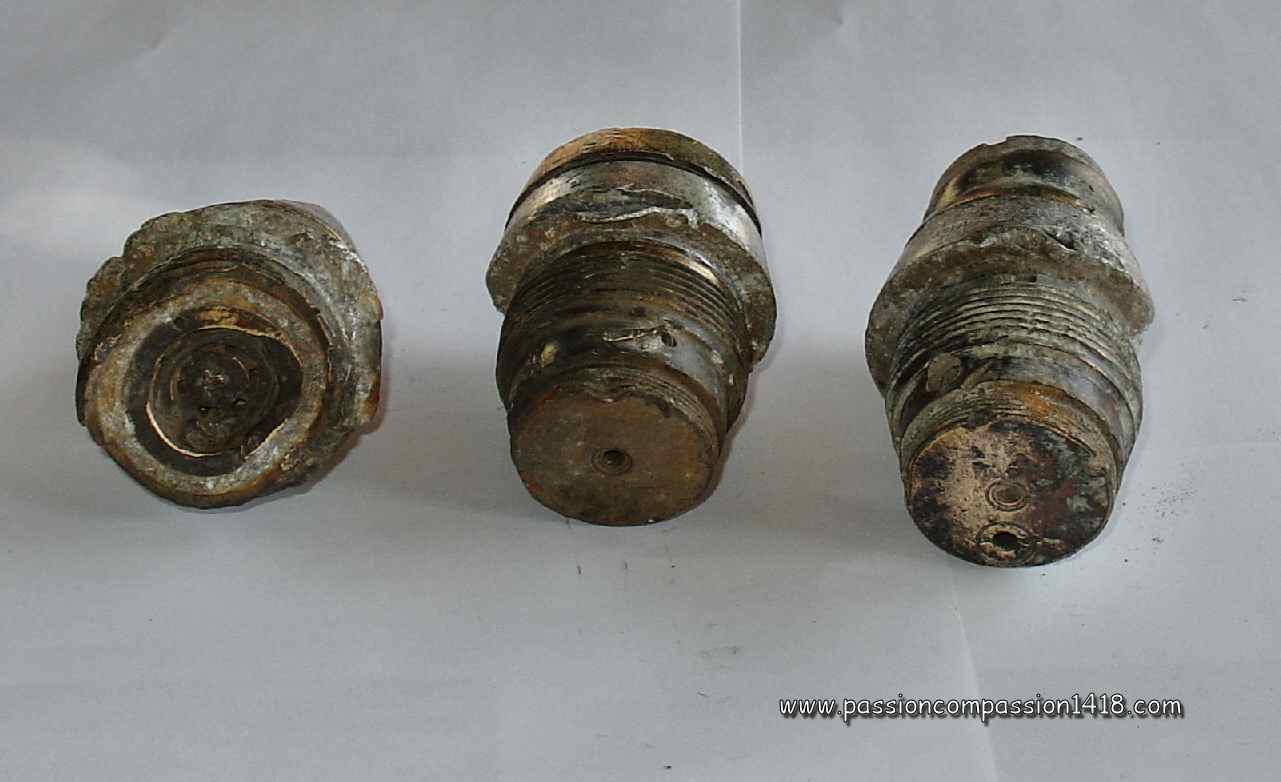 |
||
US fuzes US TSQ M54, TSQ M55, and TM43 |
||
 |
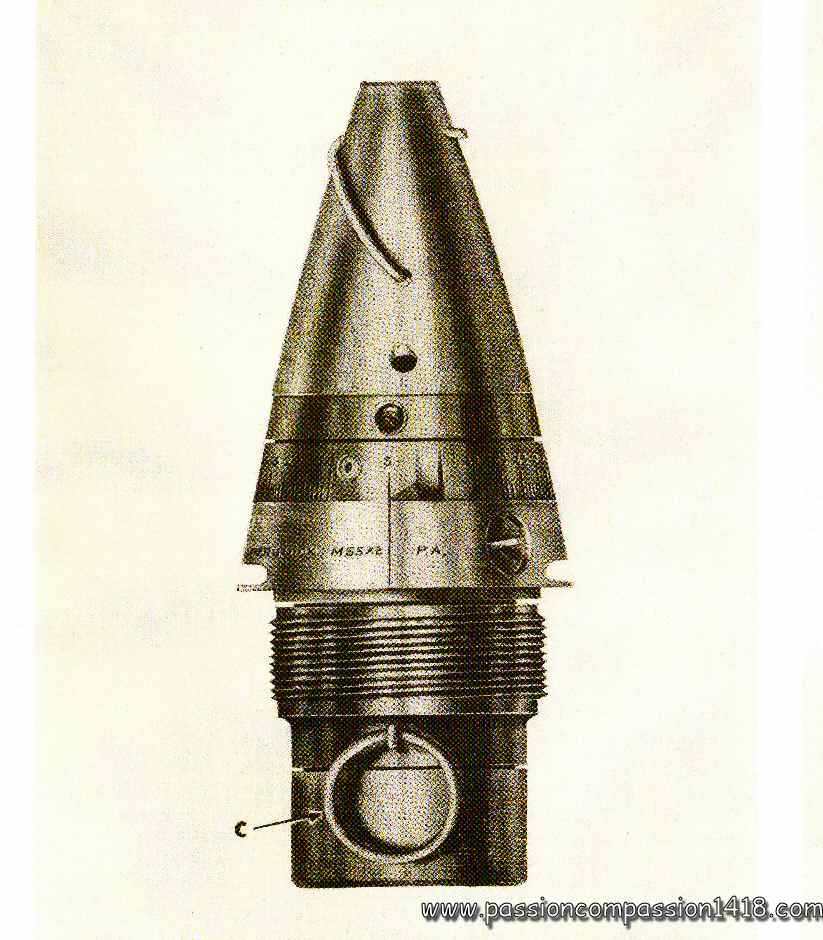 |
|
Wartime scheme - US WW2 fuze M54 |
Wartime scheme - US WW2 fuze M55 |
|
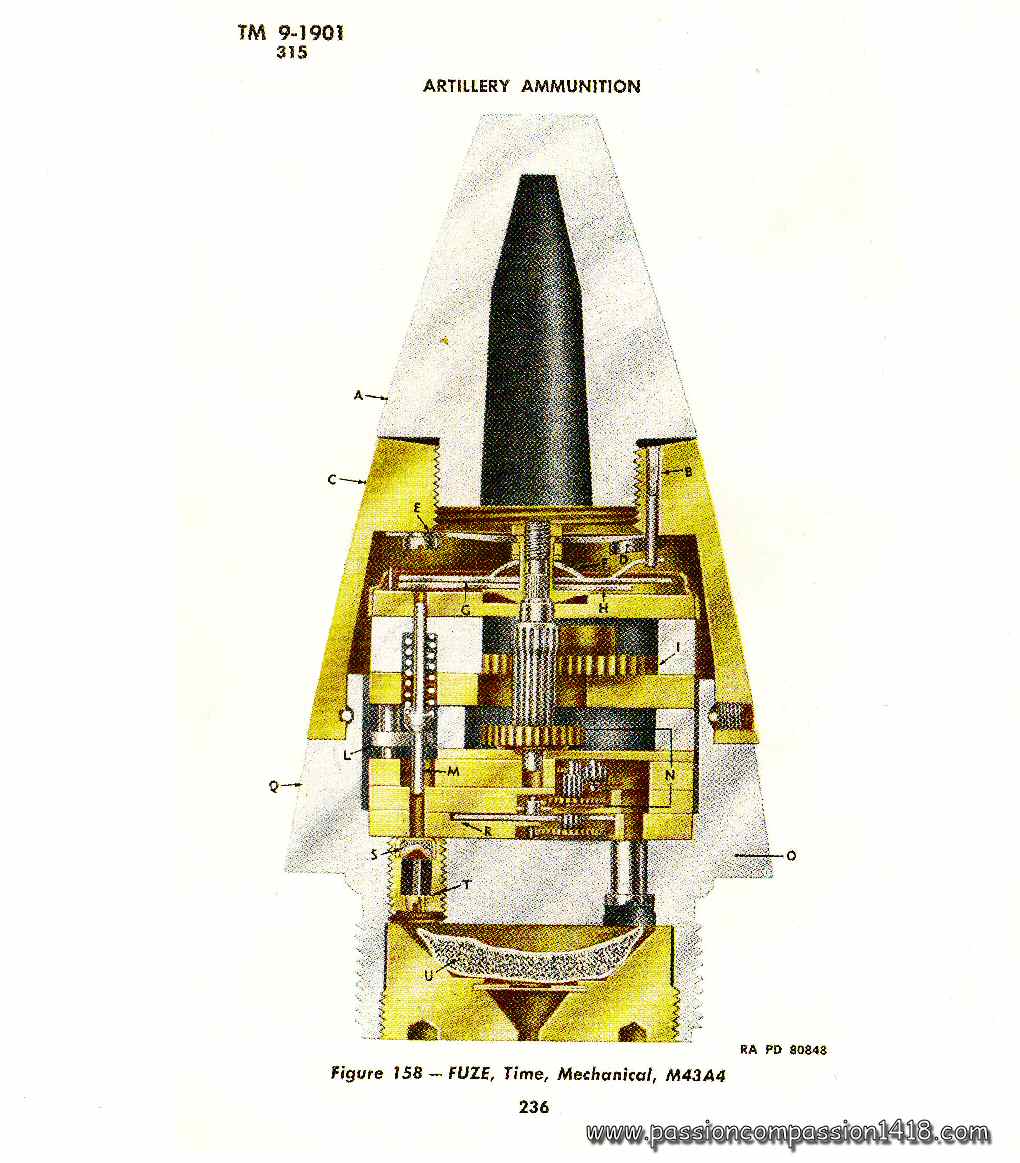 |
||
Wartime scheme - US WW2 fuze M43 |
||
Return at the top of the page |
||
Time and percussion Czech fuze |
||
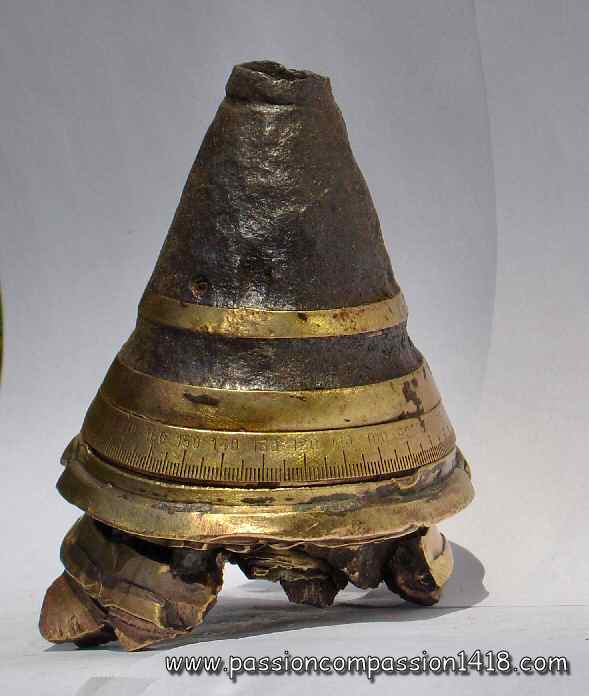 |
 |
This fuze has been observed in the 'Musée des Abris' in Albert, in the area of the Somme.
It shows several stunning characteristics :
Two different identification hypothesis have been made on specialised forums : an english time fuze modified for intantaneous percussion mode, or a Czech WW2 fuze for 105mm shells. |
Czech conical fuze graduated up to 250 |
Czech conical fuze |
|
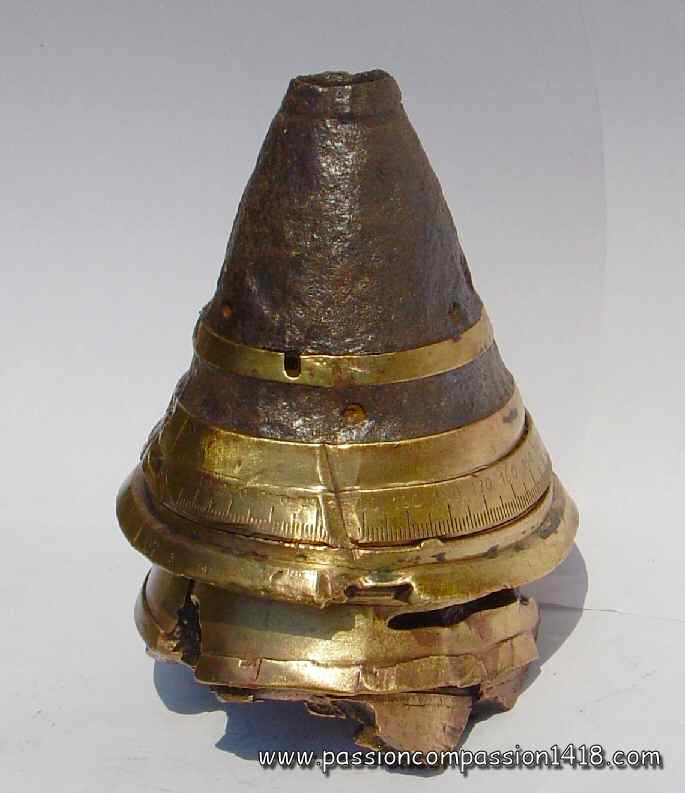 |
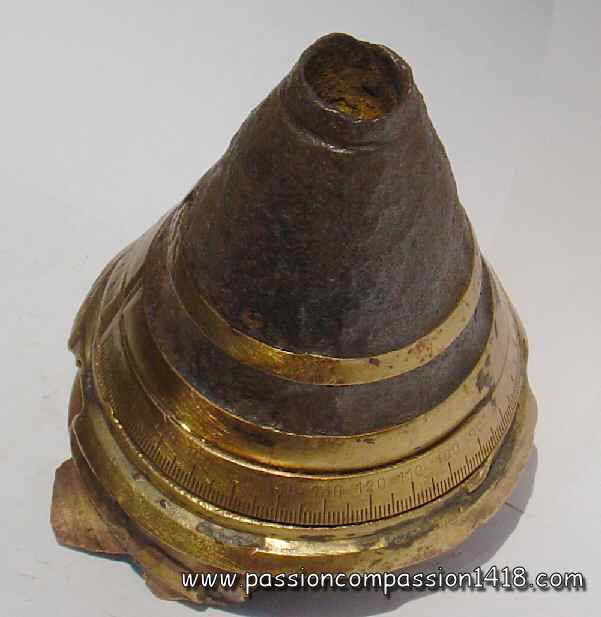 |
|
Czech conical fuze |
Czech conical fuze, upper view |
|
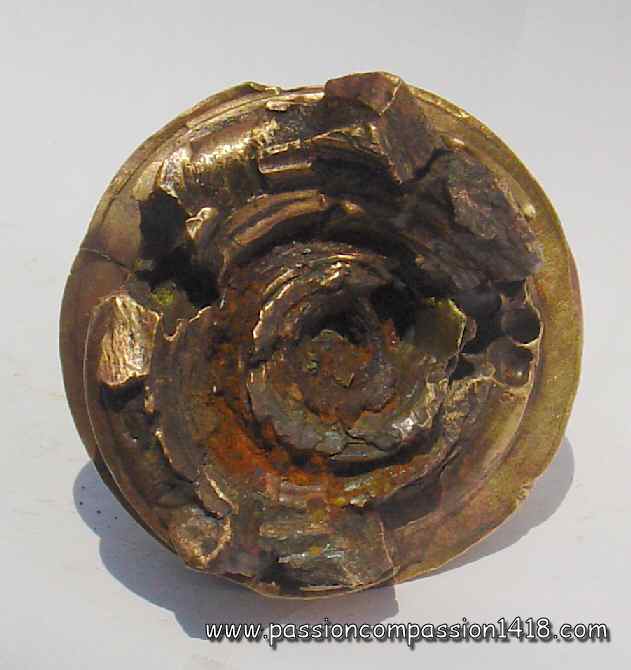 |
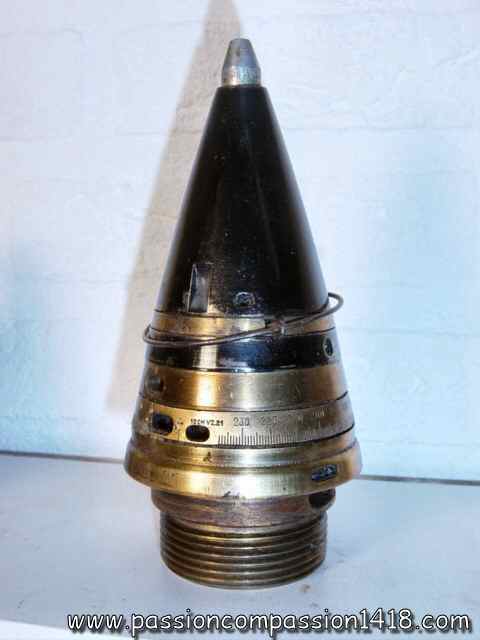 |
|
Czech conical fuze, view from below |
Czech conical fuze, intact item |
|
.jpg) |
.jpg) |
|
Czech conical fuze on 105 mm shell, modern drawing from JL Decherit |
Czech conical fuze on 150 mm shell, modern drawing from JL Decherit |
|
Return at the top of the page |
||
Therefore, plugs of different shapes and material were used during the shell transportation in order to keep its inner charge safe from humidity. This kind of material could justify a dedicated study in itself.
Here are some examples.
Transportation plug |
||
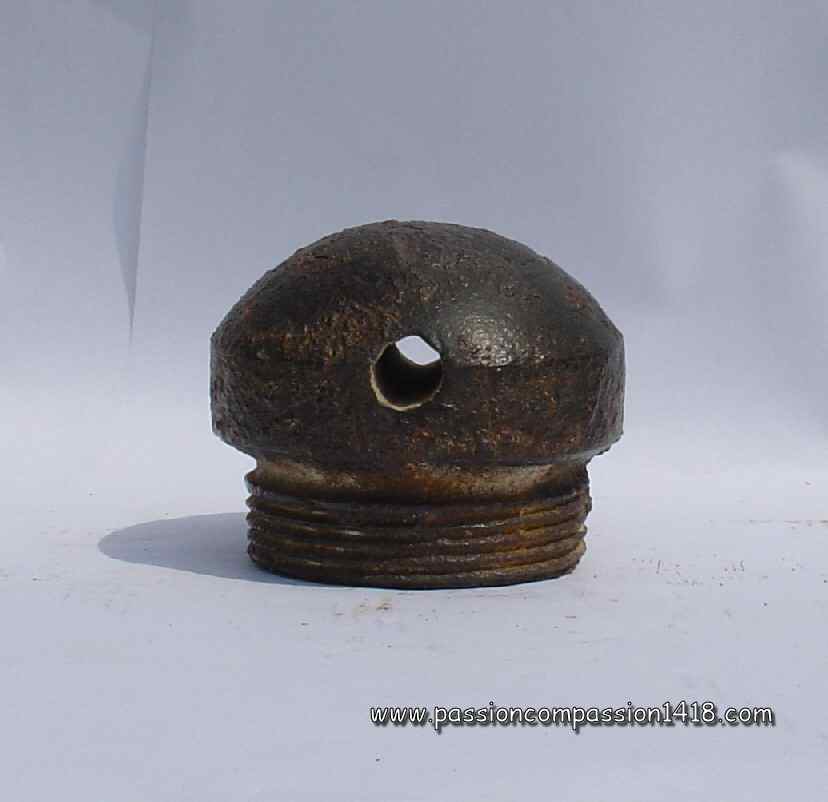 |
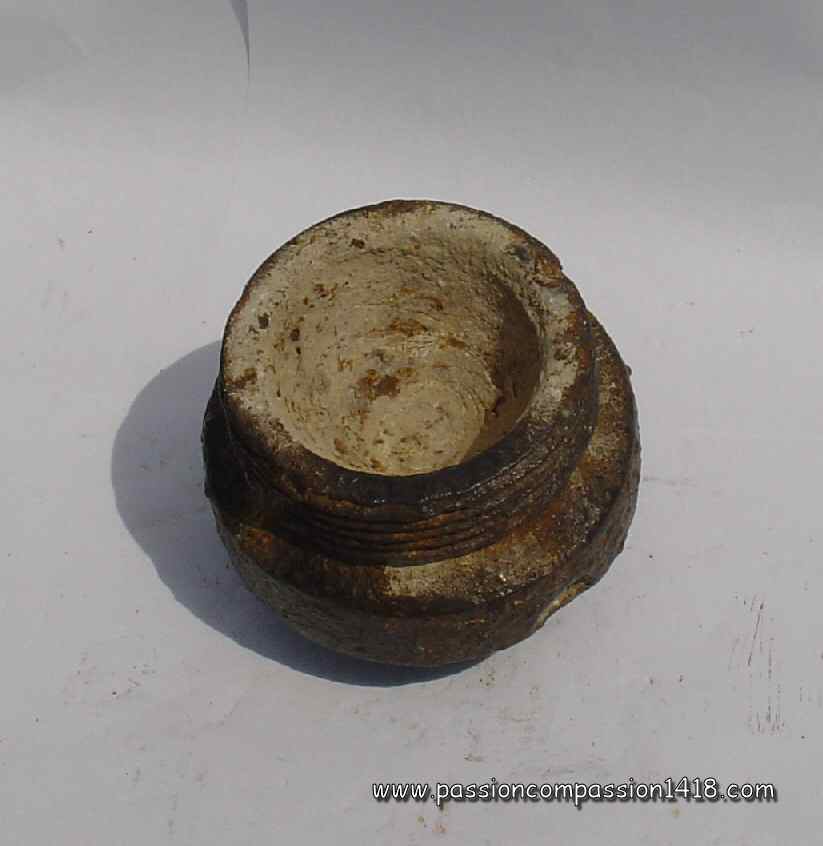 |
That plug type has been seen in some museums mounted on German heavy caliber shells. It is a steel piece, with a hole for the introduction of a transportation hook. The thread diameter is 59 mm |
Plug with hole for transportation hook |
Plug with hole for transportation hook |
|
 |
||
Plug with hole for transportation hook |
||
Return at the top of the page |
||
Transportation plug |
||
 |
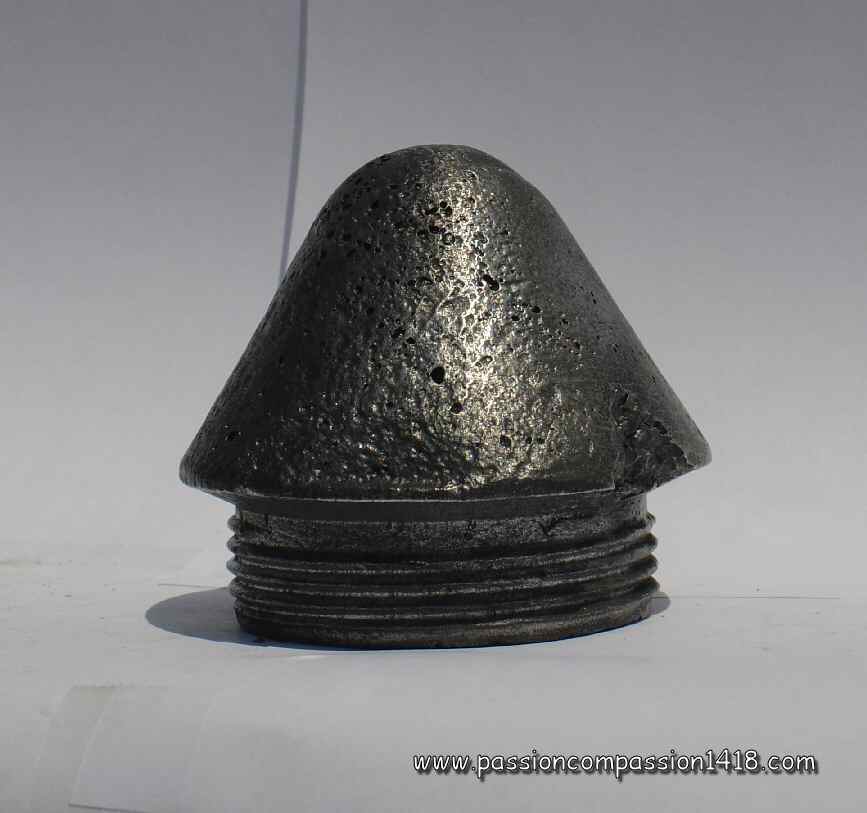 |
That plug type is often observed in some museums mounted on German minenwerfer shells. Its material is zamac, a poor alloy of Zinc with Magnesium, Aluminium, and Copper. The thread diameter is 55 mm. |
Zamac German plug |
Zamac German plug |
|
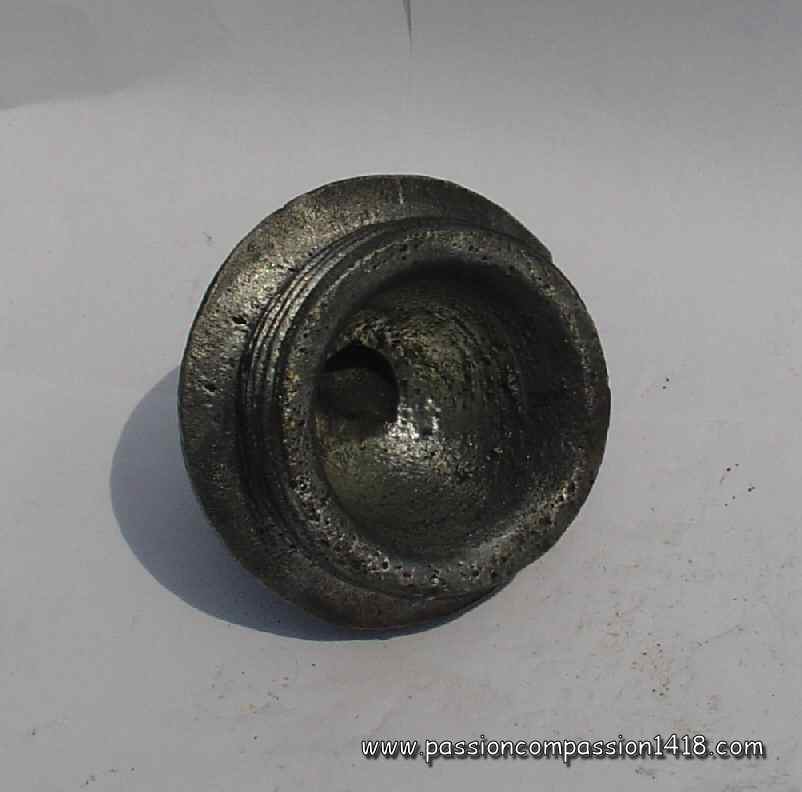 |
 |
|
Zamac German plug |
Zamac German plug |
|
Return at the top of the page |
||
Transportation plug |
||
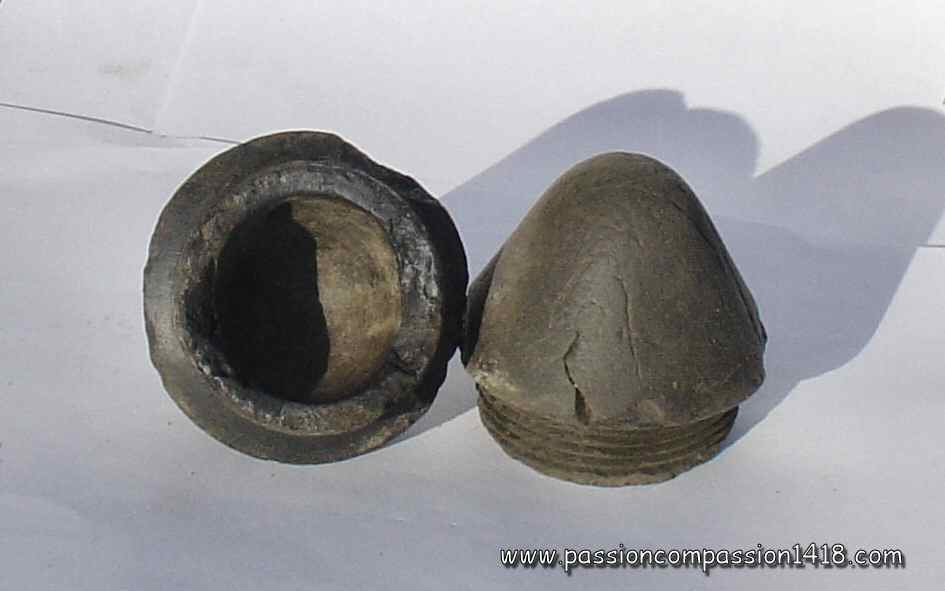 |
That plug type is often observed in some museums mounted on German minenwerfer shells. Its material is a light and poorly resistant synthetic black material, explaining the bad condition those plugs are often found nowadays. The thread diameter is 55 mm. |
|
Synthetic German plug |
||
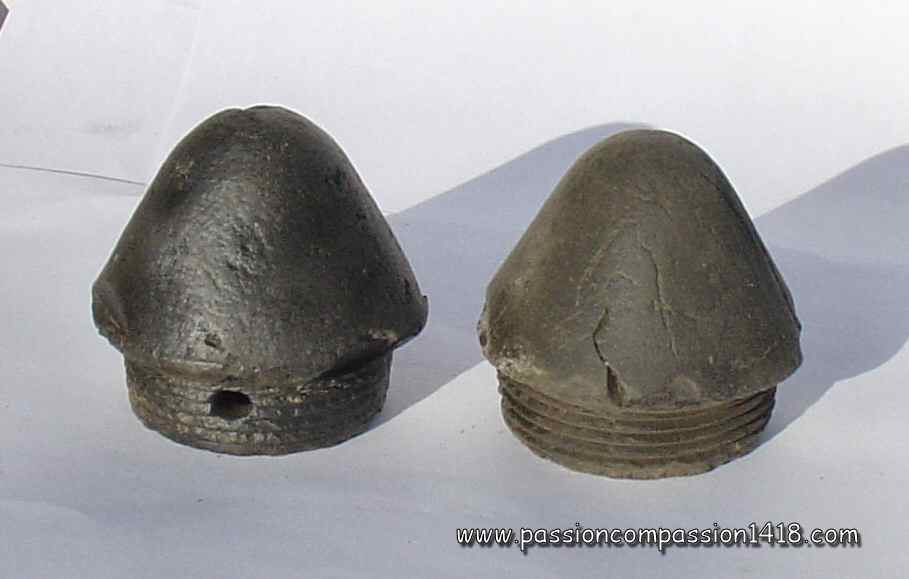 |
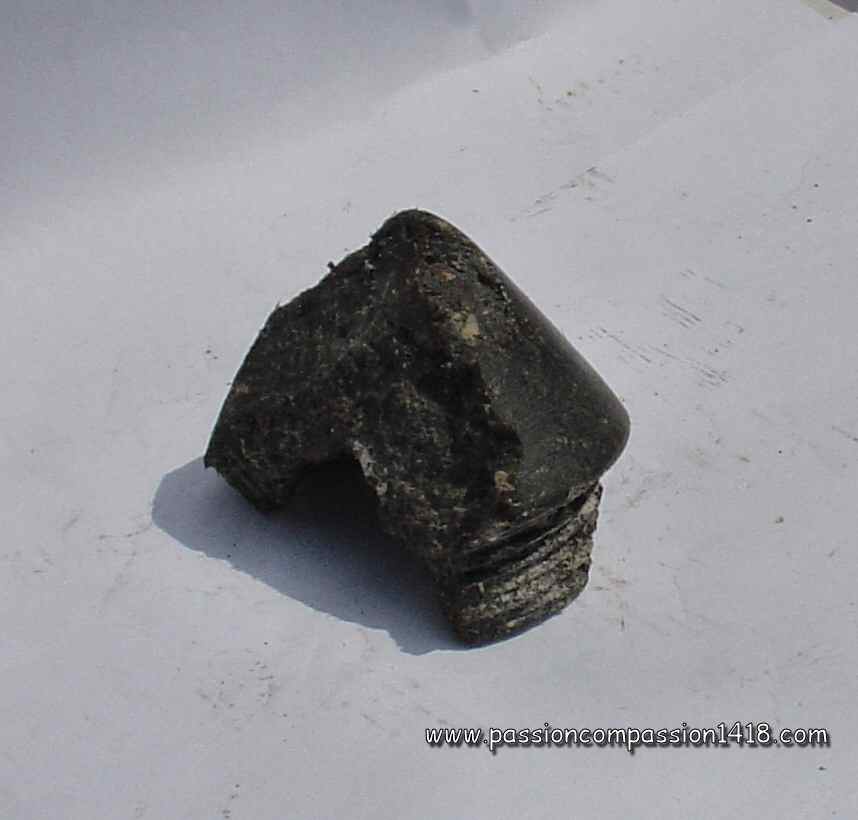 |
|
Synthetic German plug |
Synthetic German plug |
|
Return at the top of the page |
||
Transportation plug |
||
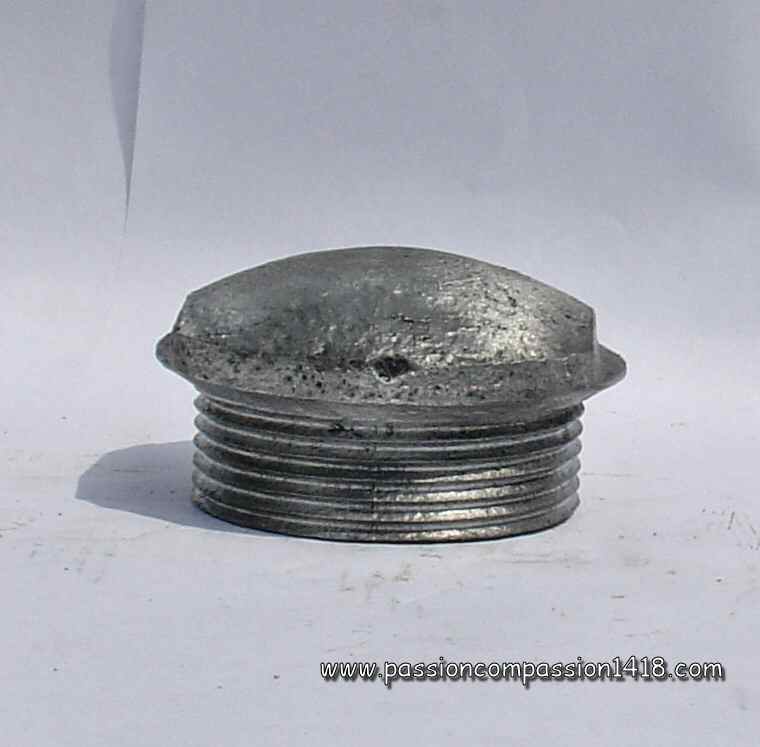 |
 |
I suppose that plug is German just because its shape has important analogies with typical German fuzes such as GrZ96, 04 ou 14. Its made with zamac, a poor alloy of Zinc with Magnesium, Aluminium, and copper (this is another clue to its probable German origin). The thread diameter is 57 mm. |
Flattened plug |
Flattened plug |
|
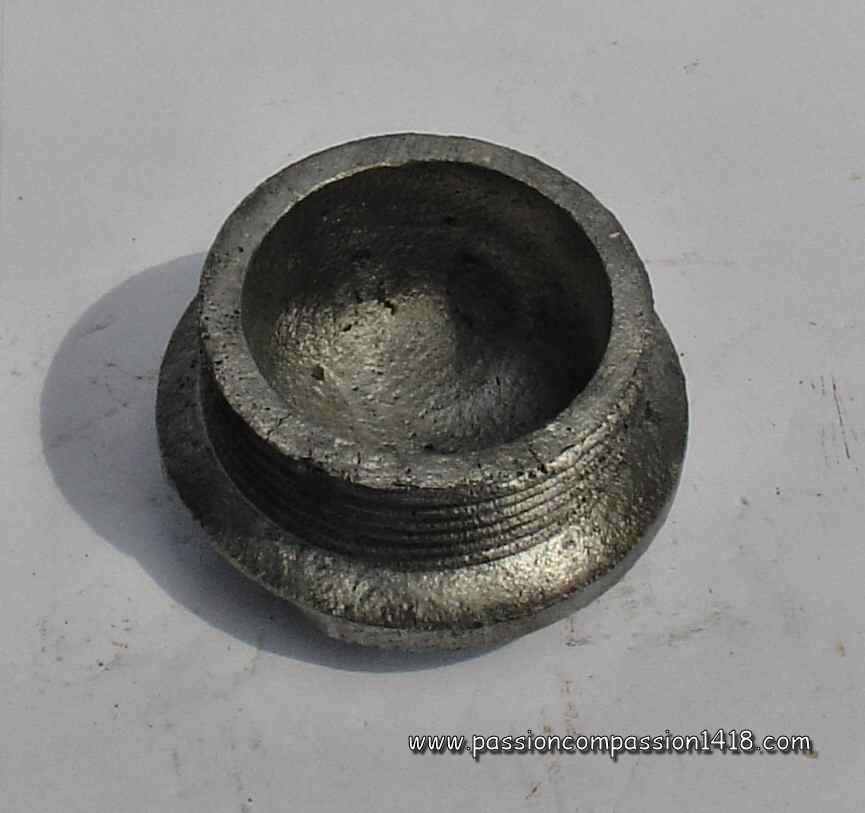 |
||
Flattened plug |
||
Return at the top of the page |
||
Transportation plug |
||
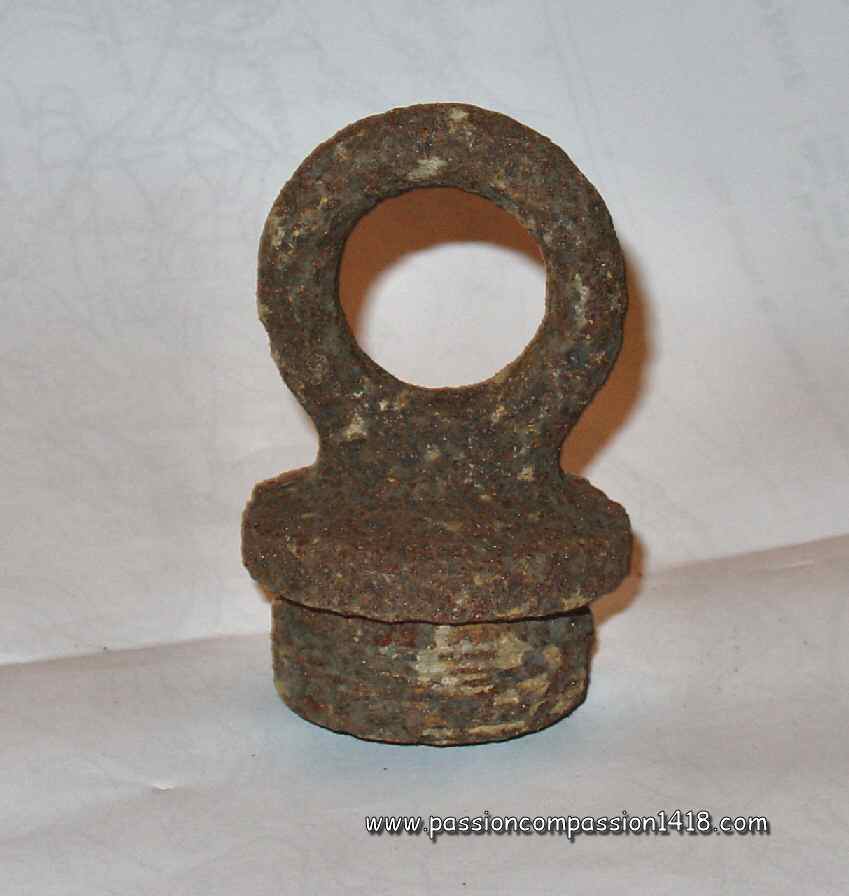 |
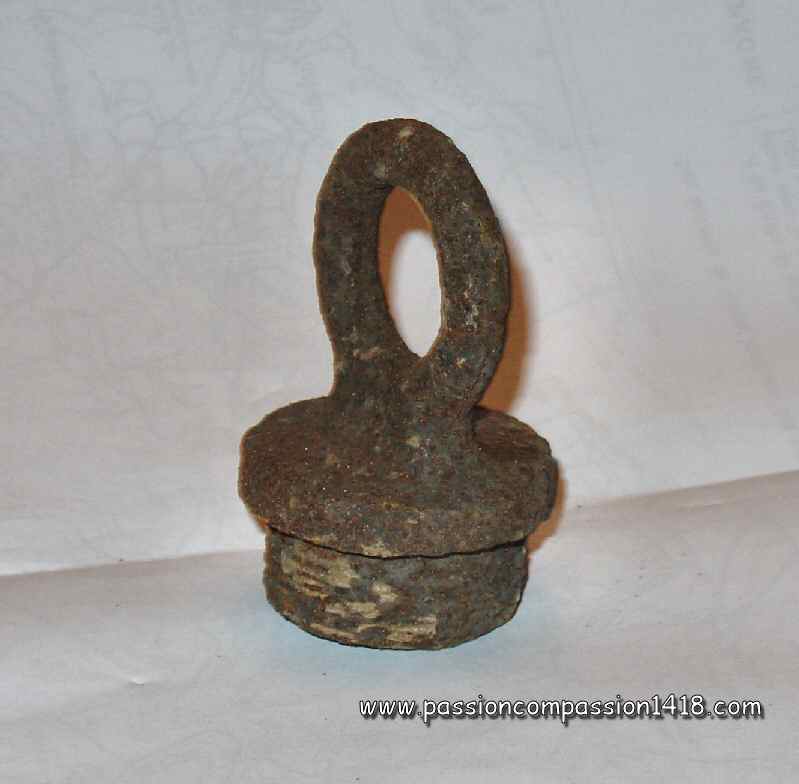 |
That plug type is often observed on some old pictures mounted on English heavy caliber shells. It is made of steel, and integrates a transportation hook. The thread diameter is 50 mm. |
Plug with transport hook |
Plug with transport hook |
|
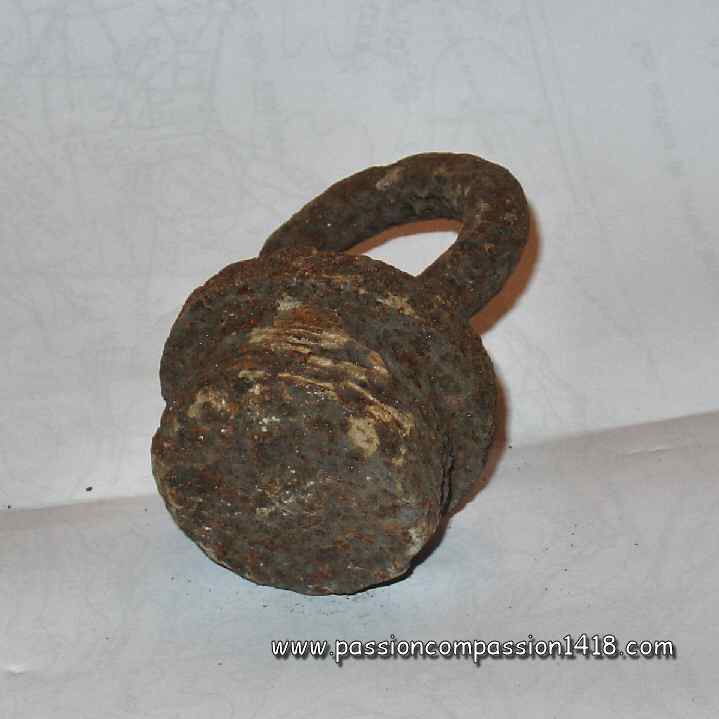 |
||
Plug with transport hook |
||
Return at the top of the page |
||
Transportation plug |
||
 |
For a long time I thought these pieces were some kind of rear fuzes. But it is in fact very unharmful English plugs. Their shape is made to take the place of the fuze tail and the detonateor in the shell charge. there are several varieties of that plug, with different head markings and shapes. The thread diameter is 50 mm. |
|
Flat head English plug |
||
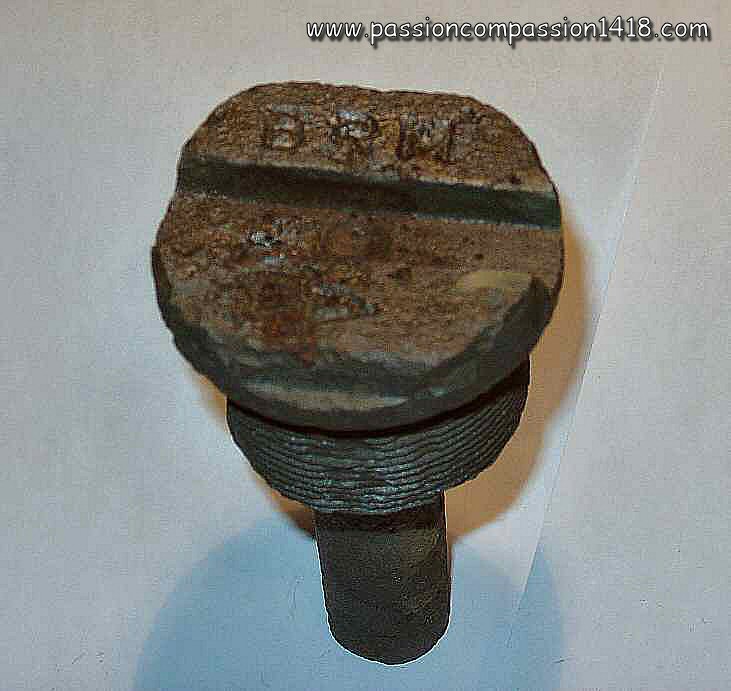 |
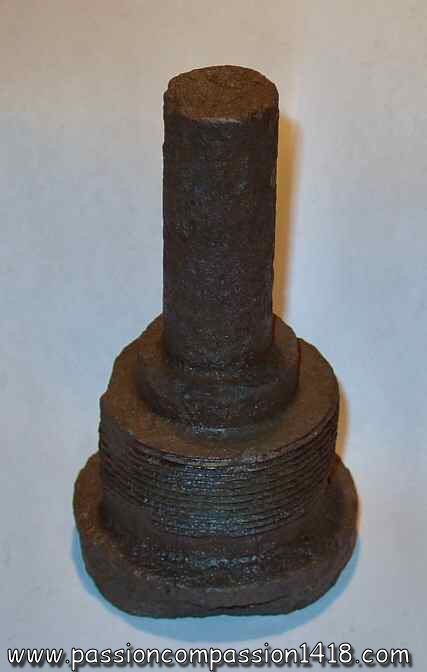 |
|
Flat head English plug |
Flat head English plug |
|
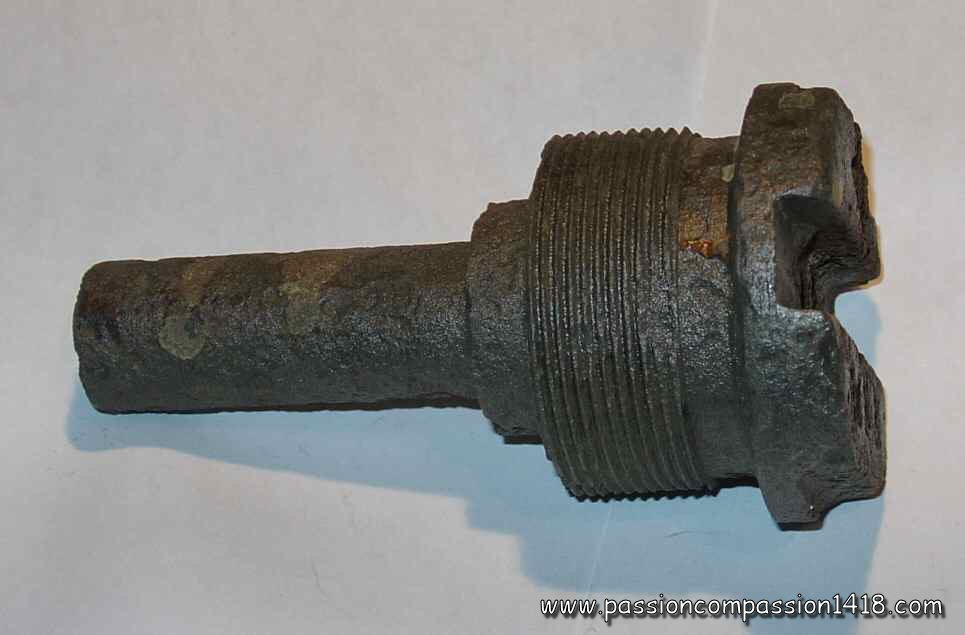 |
||
Flat head English plug |
||
Return at the top of the page |
||
Transportation plug |
||
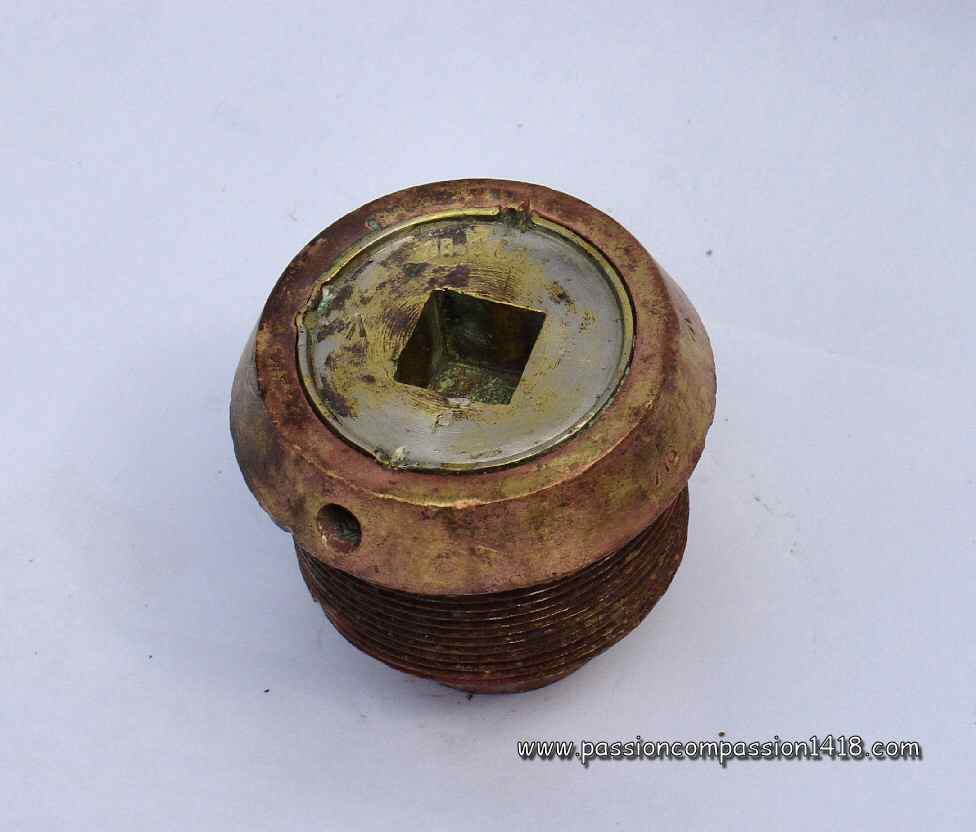 |
 |
Some english fuzes (particularly the fuze nr 44) had a narrower thread than the shell hole. Therefore, an adaptator had to be used to receive the fuze thread, and then be screwed into the shell larger hole. An aluminium piece could replace the fuze during transport, so that the adaptator temporarly became a plug. The thread diameter is 50 mm. |
English plug-adaptator |
English plug-adaptator |
|
 |
||
English plug-adaptator |
||
Return at the top of the page |
||
Transportation plug |
||
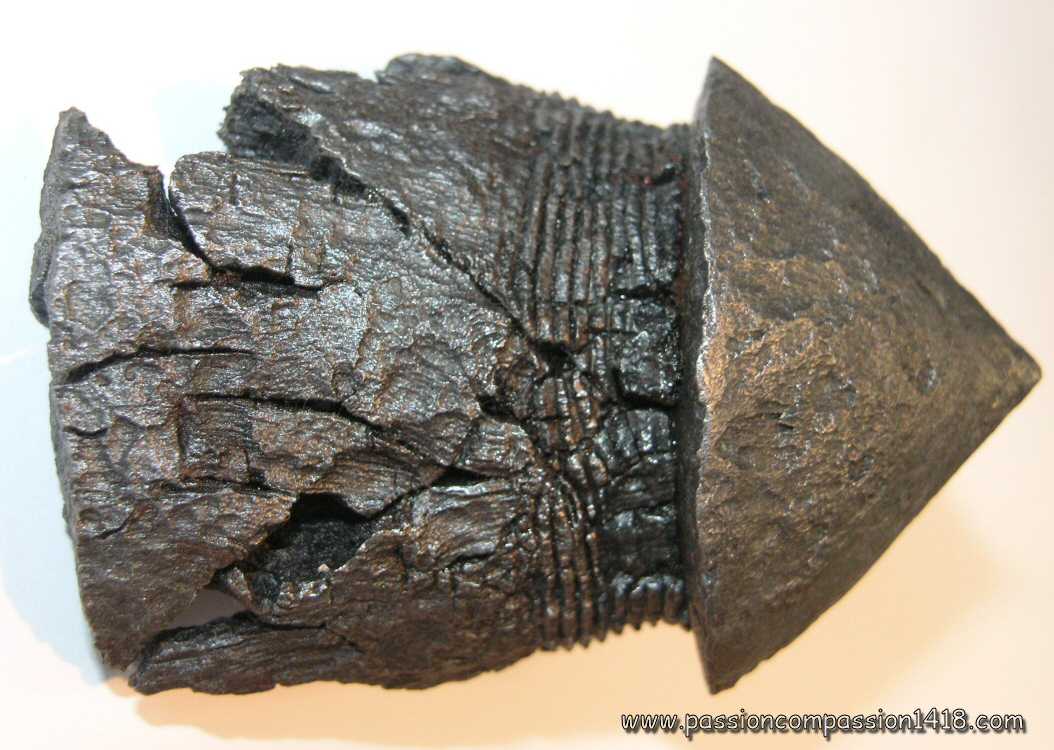 |
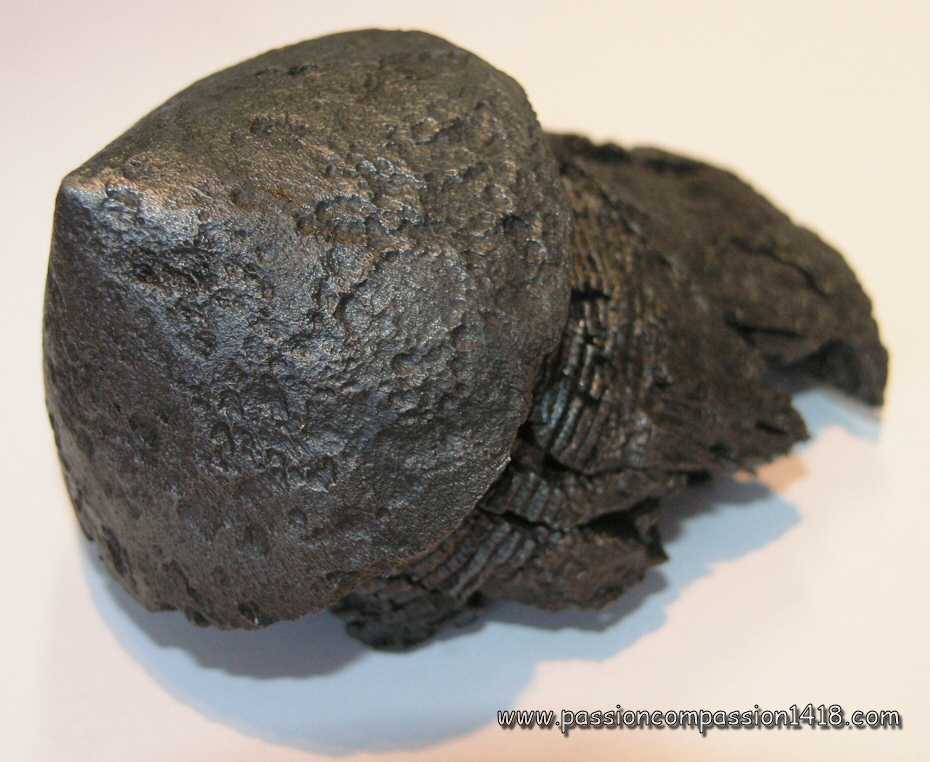 |
Steel French plug for 90mm shells.
|
French 90mm plug. Pictures courtesy Luc Malchair |
French 90mm plug. Pictures courtesy Luc Malchair |
|
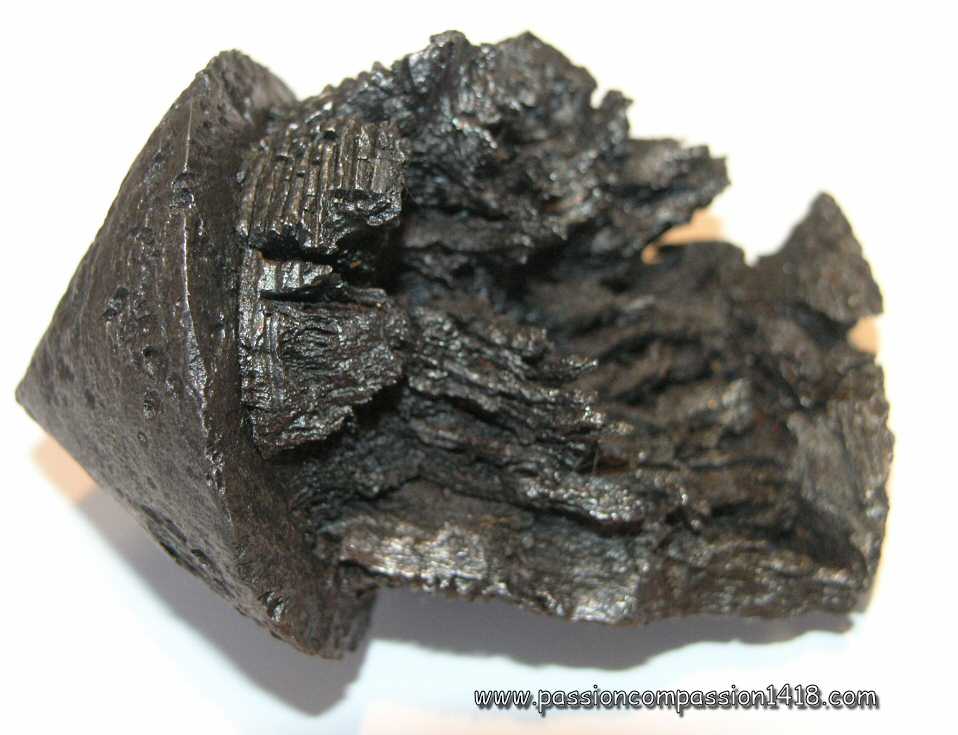 |
||
French 90mm plug. It looks like the plugged shell exploded... . Pictures courtesy Luc Malchair |
||
Return at the top of the page |
||
Transportation plug |
||
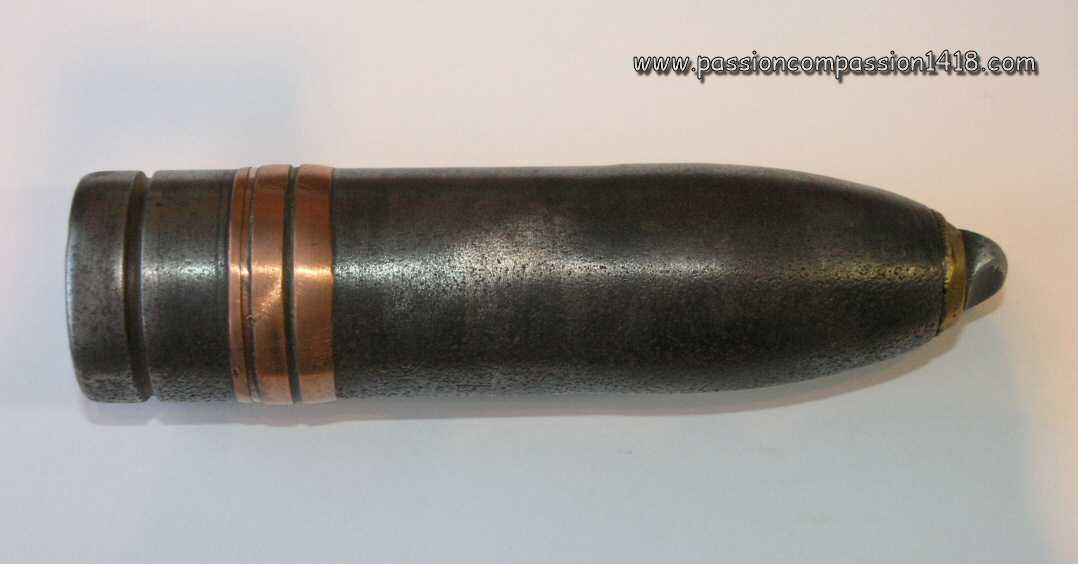 |
Italian shell 40mm with its transportation plug.
|
|
Italian 40mm plug. Pictures courtesy Luc Malchair |
||
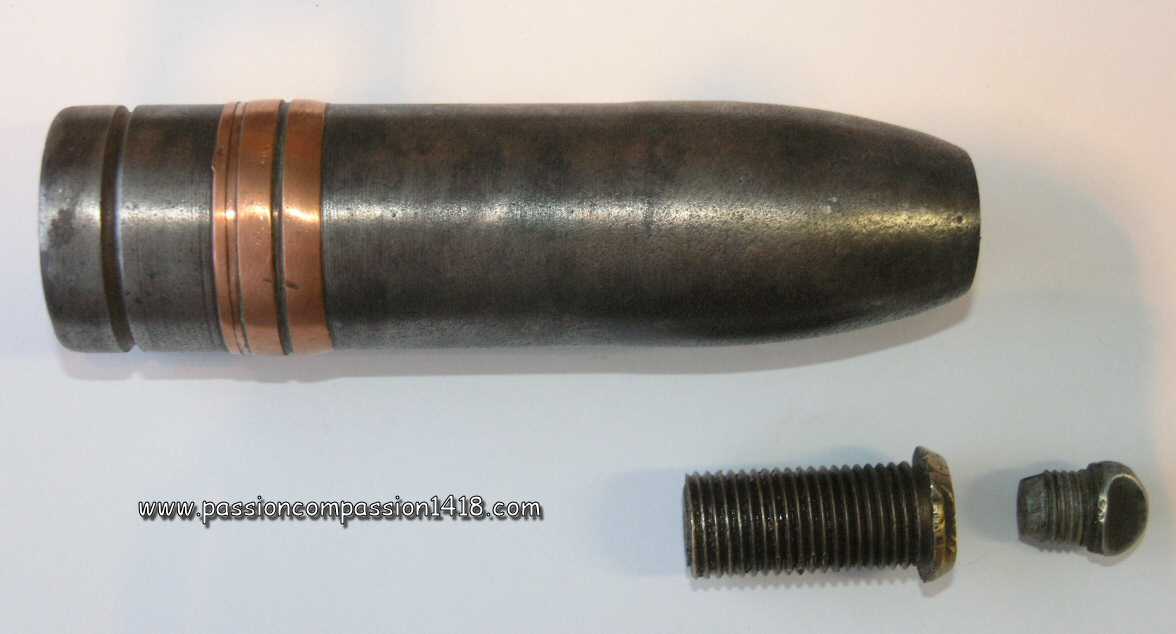 |
||
Italian 40mm plug. Pictures courtesy Luc Malchair |
||
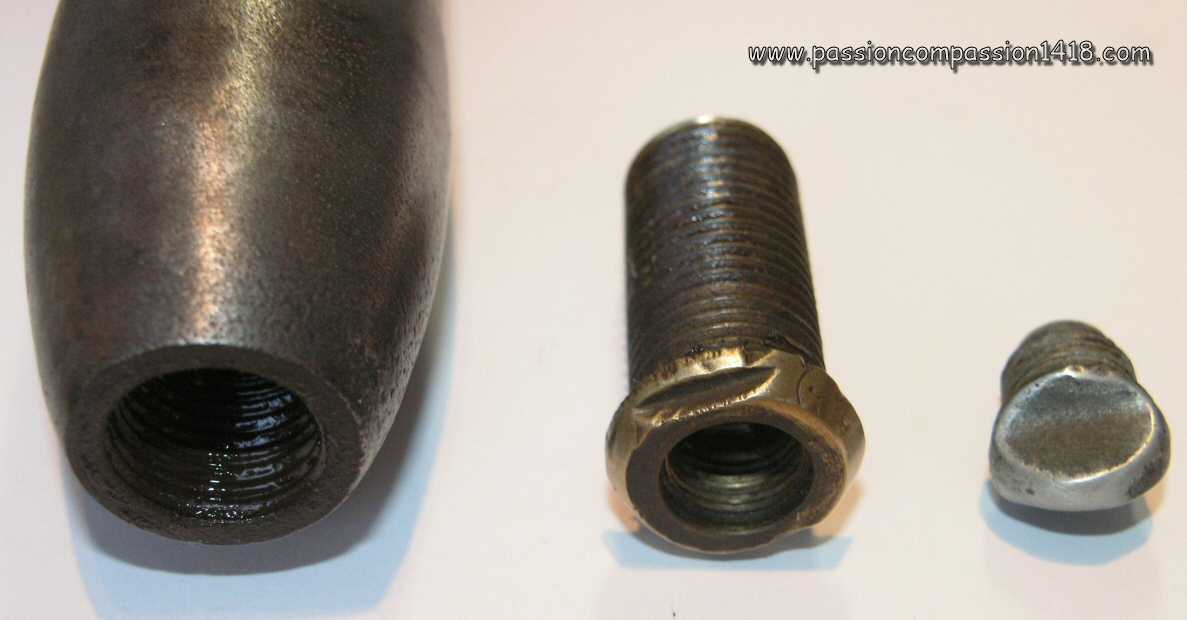 |
||
Italian 40mm plug. Pictures courtesy Luc Malchair |
||
 |
||
Italian 40mm plug. Pictures courtesy Luc Malchair |
||
Return at the top of the page |
||